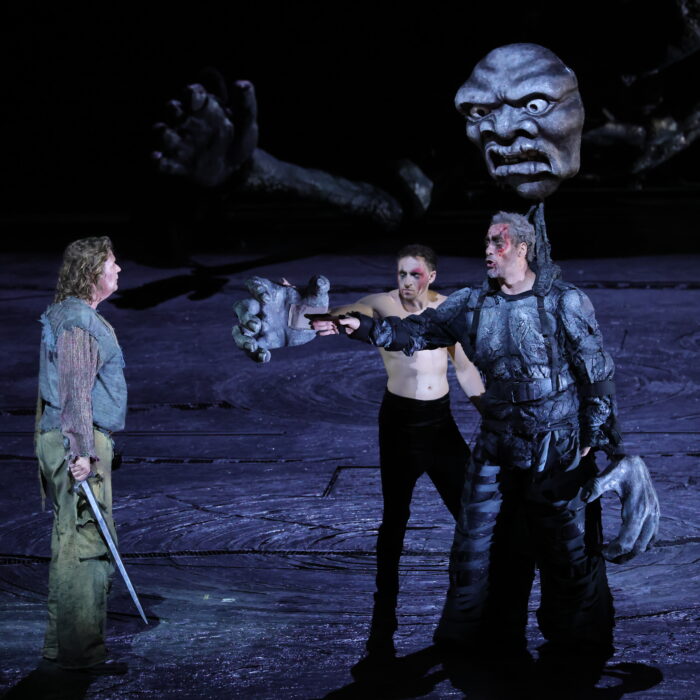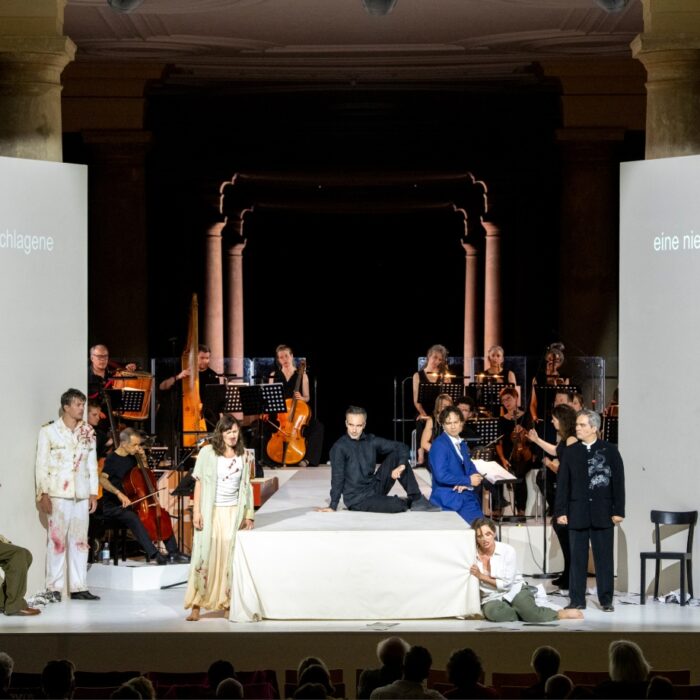
CD Review: Puccini’s ‘Le Willis’
Imposing LPO and Sparkling Ermonela Jaho Dominate Opera Rara Release
By Bob DieschburgIn line with its commitment to promote the sidelined repertoire of the 19th century, Opera Rara has released the world premiere recording of “Le Willis,” the one-act opera that Puccini submitted to the Concorso Sonzogno and later turned into the revised version of “Le Villi.” Not only does it testify to the musical panorama of the pre-Verismo decades, it also offers a rare glimpse into the craftsmanship of Puccini at the end of his three-year studies in Milan.
The result is an exciting and somewhat unbalanced attempt at operatic writing that betrays a still undeveloped grasp of dramatic efficiency, as well as the unresolved presence of symphonic elements.
Introduced to the “scapigiliatura” and its quest for rejuvenating Italian culture, the 25-year-old Puccini was looking for a librettist to support his participation in the Concorso Sonzogno, launched by the Milanese publisher for the first time in 1883. He met with Ferdinando Fontana in Caprino Bergamasco and was offered the libretto for “Le Willis”, a compelling story about betrayal and supernatural revenge. Based on a plot by Alphonse Karr, it had an immediate predecessor in the ballet “Giselle” and was also a derivative of the Romantic tradition à la Weber, Marschner, and the early Wagner.
Contrary to the common belief, this does not mean that “Le Willis” was perceived as a Wagnerian opus and the new release provides a welcome opportunity to correct this misattribution.
A raw version of the Puccinian idiom, the opera makes its source of inspiration very clear and a close listen does not fail to show the composer’s adherence to his Italian heritage.
Writing Music in the Symphonic Genre
More than “Le Villi,” the one-acter reveals Puccini’s attachment to the so-called number opera or opera a numeri; it follows a standardized sequence of pieces (“numbers”) that he adopts in the pastoral setting of the opening chorus and its subsequent preghiera – much unlike the followers of Wagner and their universalist concept of endless melody. It can equally be assumed that the double intermezzo, “L’abbandono” and “La tregenda,” are not statements of a professed Wagnerian, but an exercise in symphonic description that echoes the multidisciplinary talents of the young Lucchese.
By the time of “Le Willis” Puccini had already composed his “Preludio in A-major” and in an undated letter from July or August 1883, he asserts that the libretto provides “ample scope for writing music in the symphonic genre.”
Perhaps most striking is his paraphrase of Verdian roles and aria types. Whereas the two-act version gives greater prominence to Roberto and Anna, “Le Willis” demonstrates an atypical interest in the paternal figure of Guglielmo Wulff who sings the opera’s only aria: the high tessitura of “Anima santa” is reminiscent of Verdi baritones and the vocal ark of cavatinas like “Il balen del suo sorriso.”
Wulff becomes the real protagonist and, as a forsaken father, structures the narrative from beginning to end. It should also be noted that he closes the act in Verdian fashion with the exclamation: “È giusto Iddio!” Parallels to Rigoletto mourning the death of his daughter are very obvious and Puccini replaced this pastiche with a chorus of wrights in his 1884 version of “Le Villi.”
Musically, “Le Willis” displays a lighter orchestration than its pendant and minor variants do not significantly impact the narrative or dramatic cohesion of either version. In the duet, for instance, the score is missing a coda and the vengeful spirits are not yet the musical agents that drive the danse macabre and Roberto’s demise in the later work.
The same holds true for the tenor and soprano parts whose arias do not appear in the original score of 1883, but are recorded as a welcome addendum and showcasing opportunity at the end of the performance; Opera Rara does not fail to include “Se come voi piccina” and “Torna ai felici dì” which are uncompromising highlights of Puccini’s early period. As a side note then, it should be reminded that the tenor solo was only published in the second edition of “Le Villi” in May 1885, that is after the Turin premiere at the end of 1884.
Mark Elder & the Sumptuous LPO
The major asset of the new recording is the informed conducting of Mark Elder whose philological knowledge of the 19th century repertoire foregoes the temptation of reading “Le Willis” as a veristic piece ante litteram. His approach is focused throughout and remains free of any scholarly preconceptions.
Consequently, the LPO is playing with great clarity and a dynamic scope that ranges from the intimate atmosphere of the love duet – reminiscent of chamber operas – to the emotional climax of the prayer scene.
The cast is unfortunately not at the same level and Brian Mulligan seems to be its weakest link. His vocal timbre does not inspire the moral authority of Guglielmo Wulff and the interpretation is less paternal than clumsy and strangely histrionic.
For instance, the opening phrase of his arioso – “No! Possibil non è” – is marred by a staccato-like emission that turns the vowels into some open-throated sighs. Whether this is a deliberate choice or a symptom of vocal strain is hard to determine. The American baritone becomes comfortable only in the middle register.
Ermonela Jaho presents a sensitive reading of the betrayed Anna. Her singing is greatly helped by dramatic intuition and the intelligence of her phrasing infuses the character with a psychological depth that is rarely encountered in this soubrette-turned-Erinys. This applies for the finale and repetition of “Tu dell’infanzia mia” in particular where Jaho succeeds in juxtaposing fragility with the otherworldly brutality of the revenant.
It is not surprising that Arsen Soghomonyan pales in comparison to the Albanian soprano. Soghomonyan, who was a baritone until 2017, displays vocal routine and surprising breath control that mainly benefits his consistent and secure use of the mezza voce.
“Le Willis” is best understood as a stylistic hybrid that oscillates between the vocal and the symphonic; it builds on melody as a prime constituent of the Italian school of composition, remaining impartial to the disparaging debates on Wagnerism and the permeation of transalpine ideals.
On the other hand, “Le Willis” was not the revelation that audiences in the 1880s were hoping for and it certainly had not established Puccini as the main contender to succeed Verdi at the pinnacle of national fame. What is more, the grander instrumentation and structural balance of “Le Villi” needs to be considered preferable to the earlier work.
Opera Rara has nonetheless produced a valuable recording that – despite its flaws – boasts the occasional spark of genius so characteristic of Puccini’s mature style.


